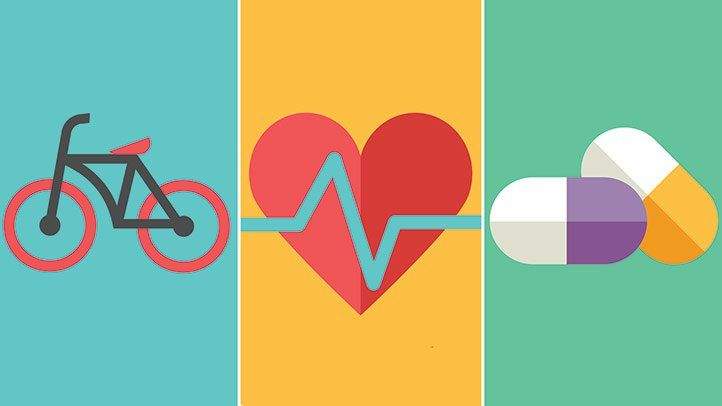An arrhythmia is a condition characterized by an irregular heartbeat, which can manifest as a heart that beats too quickly (tachycardia), too slowly (bradycardia), or with an irregular rhythm. The heart’s electrical system regulates its rhythm, ensuring that the heart beats in a coordinated manner to effectively pump blood throughout the body. When this electrical system malfunctions, it can result in an arrhythmia.
The duration of an arrhythmia episode can vary significantly depending on the type and underlying cause of the arrhythmia. This article explores the factors influencing the length of arrhythmia episodes, types of arrhythmias, their symptoms, diagnosis, treatment options, and preventive measures.
Types of Arrhythmias And Their Duration
Arrhythmias can be broadly categorized into several types, each with its characteristics and potential duration:
1. Atrial Fibrillation (AFib):
Duration: Episodes can last from minutes to hours, days, or even be persistent.
Characteristics: AFib is a common type of arrhythmia where the atria (upper chambers of the heart) beat irregularly and often rapidly, causing poor blood flow. It can be paroxysmal (intermittent), persistent, or permanent.
Symptoms: Palpitations, fatigue, shortness of breath, and dizziness.
SEE ALSO: Can Blood Pressure Medication Cause Arrhythmia?
2. Atrial Flutter:
Duration: Similar to AFib, episodes can last from a few minutes to several hours or be ongoing.
Characteristics: Atrial flutter involves a rapid but regular heart rhythm originating in the atria. It is often seen in individuals with existing heart disease.
Symptoms: Similar to AFib, including palpitations and shortness of breath.
3. Supraventricular Tachycardia (SVT):
Duration: Episodes can last from seconds to hours and may suddenly start and stop.
Characteristics: SVT is an abnormally fast heartbeat originating above the ventricles. Types include atrioventricular nodal reentrant tachycardia (AVNRT) and Wolff-Parkinson-White (WPW) syndrome.
Symptoms: Rapid heartbeat, chest pain, and dizziness.
4. Ventricular Tachycardia (VT):
Duration: Episodes can be brief (nonsustained VT) or last more than 30 seconds (sustained VT).
Characteristics: VT originates in the ventricles and can be life-threatening, especially if sustained. It often occurs in individuals with significant heart disease.
Symptoms: Palpitations, chest pain, shortness of breath, and fainting.
5. Ventricular Fibrillation (VFib):
Duration: Episodes are typically brief and require immediate medical intervention.
Characteristics: VFib is a severe form of arrhythmia where the ventricles quiver ineffectively, leading to cardiac arrest if not treated promptly.
Symptoms: Loss of consciousness, no pulse, and sudden cardiac arrest.
6. Bradycardia:
Duration: Can be persistent or intermittent.
Characteristics: Bradycardia is a slower-than-normal heart rate, often caused by issues with the heart’s electrical system or medication side effects.
Symptoms: Fatigue, dizziness, and fainting.
Factors Influencing Arrhythmia Duration
Several factors can influence the duration of an arrhythmia episode:
Type of Arrhythmia: As discussed, different types of arrhythmias have varying typical durations.
Underlying Causes: Conditions such as heart disease, electrolyte imbalances, thyroid disorders, and certain medications can impact the duration and frequency of arrhythmia episodes.
Triggers: Stress, caffeine, alcohol, and certain medications can trigger arrhythmias and influence their duration.
Patient’s Health: The overall health and presence of other medical conditions can affect how long an arrhythmia episode lasts.
Treatment: Medications, lifestyle changes, and medical procedures can help control and reduce the duration of arrhythmia episodes.
Diagnosis of Arrhythmias
Accurate diagnosis is crucial for determining the appropriate treatment and management of arrhythmias. Diagnostic tools include:
Electrocardiogram (ECG): Records the heart’s electrical activity and helps identify abnormal rhythms.
Holter Monitor: A portable ECG device worn for 24-48 hours to capture arrhythmias that may not occur during a standard ECG.
Event Monitor: Similar to a Holter monitor but worn for longer periods (weeks to months) to record intermittent arrhythmias.
Echocardiogram: An ultrasound of the heart that provides images of heart structures and function.
Stress Test: Monitors the heart’s activity during physical exertion to identify exercise-induced arrhythmias.
Electrophysiological Study (EPS): A specialized test where catheters are inserted into the heart to map its electrical activity and identify abnormal pathways.
Treatment And Management
The treatment of arrhythmias depends on their type, severity, and underlying cause. Common treatment options include:
Medications: Antiarrhythmic drugs, beta-blockers, calcium channel blockers, and anticoagulants can help manage arrhythmias and reduce the risk of complications such as stroke.
Lifestyle Changes: Reducing stress, avoiding caffeine and alcohol, maintaining a healthy weight, and regular exercise can help manage arrhythmias.
Medical Procedures:
Cardioversion: Electrical shocks or medications used to restore a normal heart rhythm in cases of AFib or atrial flutter.
Catheter Ablation: A procedure that uses radiofrequency energy to destroy small areas of heart tissue causing arrhythmias.
Pacemaker: A device implanted to regulate slow heart rhythms (bradycardia).
Implantable Cardioverter-Defibrillator (ICD): A device implanted to detect and treat life-threatening arrhythmias such as VT and VFib.
Preventive Measures
Preventing arrhythmias involves addressing underlying risk factors and adopting a heart-healthy lifestyle. Key preventive measures include:
Healthy Diet: Eating a balanced diet rich in fruits, vegetables, whole grains, and lean proteins while limiting salt, sugar, and unhealthy fats.
Regular Exercise: Engaging in regular physical activity to maintain cardiovascular health and reduce the risk of arrhythmias.
Avoiding Triggers: Identifying and avoiding substances or activities that can trigger arrhythmias, such as caffeine, alcohol, and excessive stress.
Managing Chronic Conditions: Properly managing conditions such as hypertension, diabetes, and thyroid disorders can help reduce the risk of arrhythmias.
Regular Check-Ups: Regular medical check-ups and monitoring of heart health, especially for individuals with a history of heart disease or arrhythmias.
Conclusion
Understanding the duration of an arrhythmia episode is crucial for effective management and treatment. While the length of arrhythmia episodes can vary widely depending on the type and underlying causes, proper diagnosis, treatment, and lifestyle changes can significantly improve outcomes and reduce the impact of arrhythmias on daily life. By adopting a heart-healthy lifestyle and working closely with healthcare providers, individuals can better manage arrhythmias and maintain a good quality of life.

